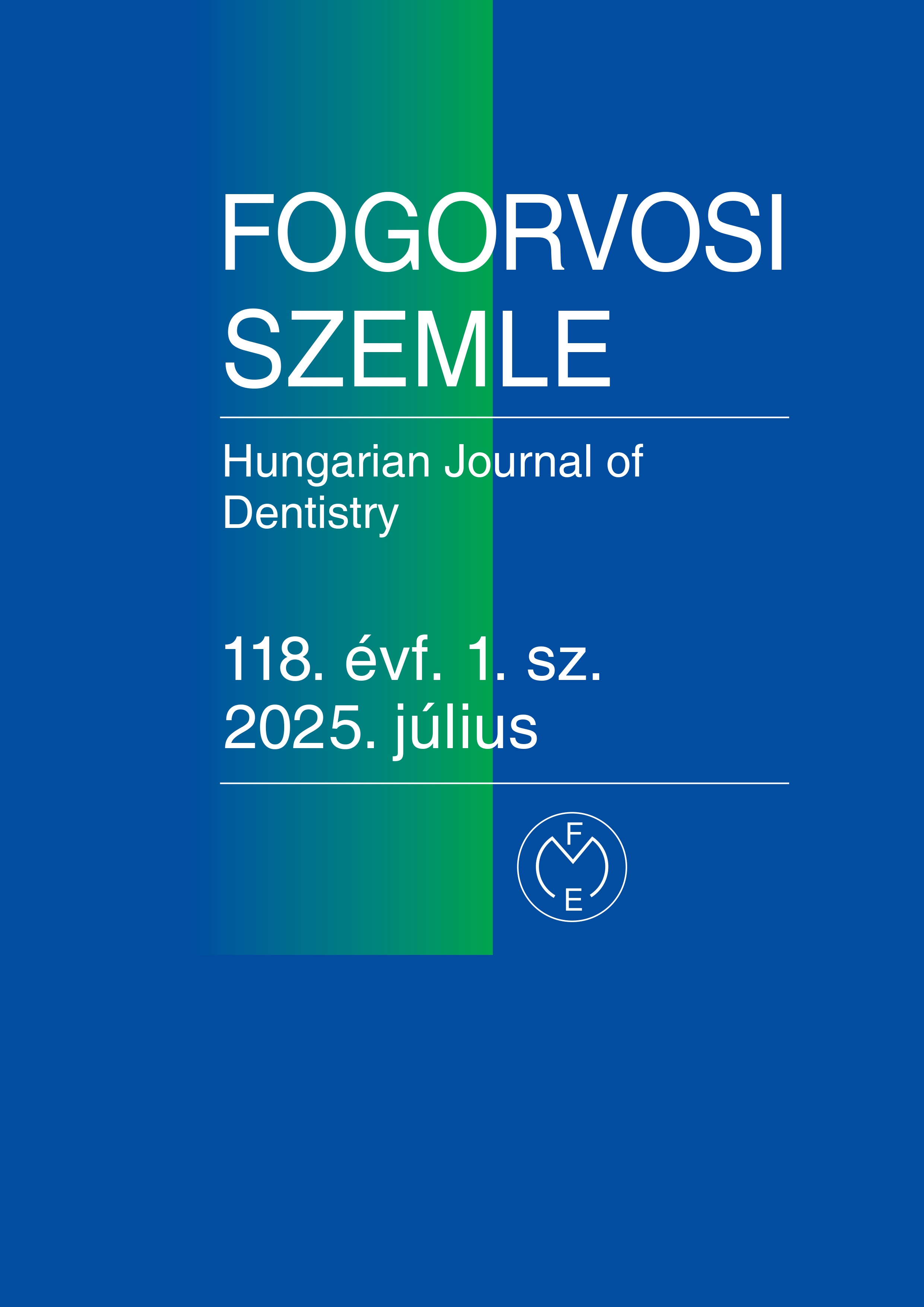The human resource aspect of the emergence of artificial intelligence in the field of orthodontics
Abstract
Orthodontics is a special field of dentistry. Altough in Hungary after the graduation dentists can work almost with full
competence, orthodontics requires a special knowledge. Without this knowledge dentists should not be allowed to perform
orthodontic treatments. This knowledge is not acquired in few days long courses – taking part in the 3-years long
specialty training would be important. With the spread of using artificial intelligence and splint therapy numerous general
dentists started orthodontics therapy, without special knowledge and orthodontics specialty exam. Artificial intelligence,
to a certain extent, compensates for the dentist’s knowledge gaps, but it cannot replace the knowlidge and experience
the dentist can collect during the 3 years long orthodontics specialty training.
References
Bichu YM, Hansa I, Bichu AY, Premjani P, Flores-Mir C, Vaid NR :
Applications of artificial intelligence and machine learning in
orthodontics: A scoping review. Prog Orthod 2021; 22, 18–24.
https://doi.org/10.1186/s40510-021-00361-9
Felkai T, Rózsa N: Az Invisalign® technológia legújabb fejlesztései
és ezek összehasonlítása a különböző sínes fogszabályozó
technikákkal. Magyar Fogorvos 2018/1; 12–17.
Ferlias N, Andrzej M, Troels O, Diekema N, Kristensen MG,
Kristensen MK, Stoustrup P: Online information on orthodontic
treatment in Denmark: A population-based quality assessment.
Am J Orthod Dentofacial Orthop Clin Companion 2021; 1: 119–126.
https://doi.org/10.1016/j.xaor.2021.05.001
Geetha V, Aprameya KS, Hinduja DM: Dental caries diagnosis in
digital radiographs using back-propagation neural network.
Health Inf Sci Syst 2020; 8, 1–14.
https://doi.org/10.1007/s13755-019-0096-y
Jorgensen G: Rethinking American Board of Orthodontics
Certification: A paradigm shift. Am J Orthod Dentofac Orthop
; 151: 1–2.
https://doi.org/10.1016/j.ajodo.2016.10.013
Khanagar SB, Al-Ehaideb A, Maganur PC, Vishwanathaiah S,
Patil S, Baeshen HA, Sarode SC, Bhandi S: Developments,
application, and performance of artificial intelligence in dentistry.
A systematic review. J Dent Sci 2021; 16, 508–522.
https://doi.org/10.1016/j.jds.2020.06.019
Krois J, Ekert T, Meinhold L, Golla T, Kharbot B, Wittemeier A,
Dörfer C, Schwendicke F: Deep Learning for the Radiographic
Detection of Periodontal Bone Loss. Sci Rep 2019; 9, 8495–8499.
https://www.nature.com/articles/s41598-019-44839-3
Ossowska A, Kusiak A, Swietlik D: Artificial Intelligence in Dentistry.
Narrative Review. Int J Environ Res Public Health 2022; 19,
–3456.
https://doi.org/10.3390/ijerph19063449
Pörzse V, Németh O, Horváth J: Mélyhúzott sínes fogszabályozó
rendszerek bemutatása. Magyar Fogorvos 2017/6; 292–296.
Wishney M, Burt I, Pirgul T, Linde Ch, Petocz P, Dalci O,
Darendeliler MA: The public perception of the differences
between specialist orthodontists and general dentists:
A comparison between Australia and Sweden.
Am J Orthod Dentofac Orthop 2020 July; 158: 68–74.
Copyright (c) 2025 authors

This work is licensed under a Creative Commons Attribution 4.0 International License.


.png)




1.png)



